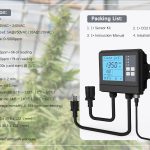
Winter Plant Maintenance: How to Keep Your Indoor Plants Happy and Flourishing
Winter Plant Maintenance: How to Keep Your Indoor Plants Happy and Flourishing
Winter can be a tough time for indoor plants, but with a little Winter can be a tough time for indoor plants, but with a little extra care and attention, they can survive and thrive even in the coldest of temperatures. Here are some strategies to help you ensure the survival of your indoor plants during the winter months:
- Reduce watering: Most indoor plants require less water in the winter because they’re not actively growing. Check the soil moisture level before watering and only water when the top inch of soil is dry to the touch. Avoid overwatering, as this can lead to root rot.
- Move plants away from drafts: Exposure to cold drafts can damage indoor plants, so move them away from windows, doors, and other areas where drafts may occur. Consider placing them on a heat-resistant surface or using a heating pad to keep them warm.
- Increase humidity: Dry air can be harsh on indoor plants, especially during the winter when heating systems are running. You can increase humidity by placing a tray of water near your plants, using a humidifier, or grouping your plants together to create a microclimate.
- Use grow lights: If you notice your plants looking leggy or dropping leaves, it may be a sign that they need more light. Consider using grow lights to supplement their natural light and provide them with the energy they need to grow.
- Prune as needed: Winter is a good time to prune your indoor plants to remove any dead or damaged leaves or stems. This will help them focus their energy on new growth in the spring.
- Watch for pests: Indoor plants are still susceptible to pests like spider mites and mealybugs, even in the winter. Keep an eye out for signs of infestation, such as webbing or sticky honeydew, and treat affected plants promptly with an insecticidal soap or neem oil.
- Consider moving plants outside: If you have hardy plants that can tolerate cold temperatures, consider moving them outside for a few hours each week to get fresh air and sunlight. Just be sure to acclimate them slowly to avoid shock from sudden changes in temperature or environment.
- Rotate your plants: To ensure that all sides of your plants receive equal amounts of light, rotate them every few weeks so that they grow evenly.
- Be mindful of fertilizer: While it’s important to reduce watering during the winter months, don’t forget about fertilizing your plants. Use a slow-release fertilizer once a month to provide essential nutrients for healthy growth.
By following these strategies, you can help ensure the survival of your indoor plants during the winter months and keep them healthy and thriving until spring arrives. Remember to be patient and provide extra care and attention during this challenging time of year.
For more information,
GZAIR is a leading manufacturer and provider of gas detection equipment. We have been developing and producing gas detector products for over 10 years. For over 10 years, businesses have come to depend on us for our expertise, quality, and customer service. We’ve worked with engineers, government agencies and business owners from a range of industries to transform the environment they live.














